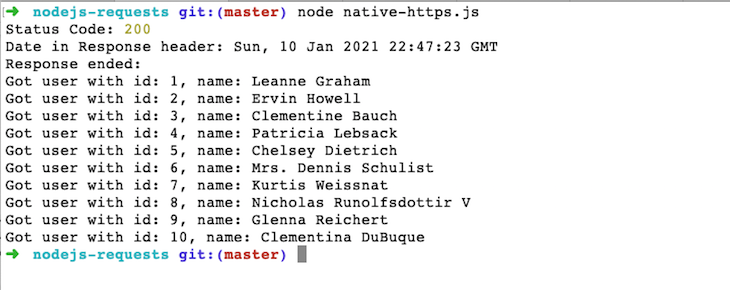

Many of these can be very verbose however, or lacking in features such. It has a server, a client, ways to parse messages, etc. In fact, Node excels strongly in the HTTP department. Like many other languages, Node has a bunch of built-in libraries (node calls these “modules”) to help make common tasks easier.

Time to get a little more complex… So how do we actually send data to an endpoint? So generally, a POST to /users will probably add a Jim as a new user, an HTTP GET request on /users/1 will get a user with ID of 1. NOTE: most endpoints DO NOT have the name of the HTTP method in them. In addition to sending, many APIs have GET endpoints like /get-users/1 which might be documented like //.
NODE FETCH DOWNLOAD FILE CODE
The code that runs on that server will listen for requests to its endpoint (/add-users), parse the data in the request (the name=Jim object), and most likely store it somewhere like in a database. So you could send that data at: add-users. On the right side you can edit the object by clicking the little box and play around with the data and see how the JSON is actually affected.Īn API endpoint is a place that can accept that kind of data. For fun, paste that code snippet into on the left side. All methods specified in the Fetch Standard are implemented.Which simply put, is just an object with a name key, and “Jim” as its value (read like name=Jim), the curly brackets mark the beginning and end of an object, the colon separates they key from its value. This class allows manipulating and iterating over a set of HTTP headers. node-fetch only supports 'default' and 'error' and does not make use of filtered responses. response.typeĬonvenience property representing the response's type. Will evaluate to true if the internal redirect counter is greater than 0. response.redirectedĬonvenience property representing if the request has been redirected at least once. Will evaluate to true if the response status was greater than or equal to 200 but smaller than 300. response.okĬonvenience property representing if the request ended normally. The constructor is identical to that in the browser.īecause Node.js does not implement service workers (for which this class was designed), one rarely has to construct a Response directly.
NODE FETCH DOWNLOAD FILE FREE

Instead of implementing XMLHttpRequest in Node.js to run browser-specific Fetch polyfill, why not go from native http to fetch API directly? Hence, node-fetch, minimal code for a window.fetch compatible API on Node.js runtime. A light-weight module that brings Fetch API to Node.js.Ĭonsider supporting us on our Open Collective:


 0 kommentar(er)
0 kommentar(er)
